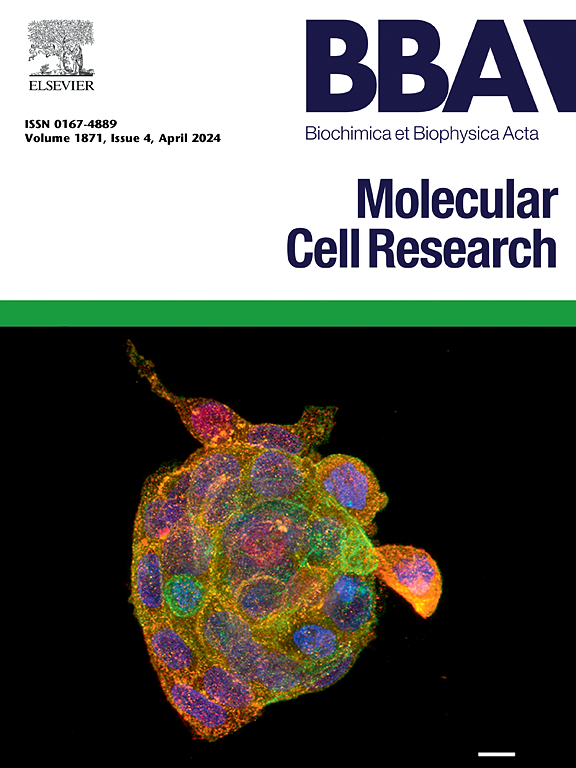Inhibition of hydrogen peroxide-induced senescence markers by yeast-derived vacuoles in human lung fibroblasts
IF 4.6
2区 生物学
Q1 BIOCHEMISTRY & MOLECULAR BIOLOGY
Biochimica et biophysica acta. Molecular cell research
Pub Date : 2025-01-27
DOI:10.1016/j.bbamcr.2025.119907
引用次数: 0
Abstract
Senescence significantly contributes to aging in various tissues, influenced by factors such as lysosomal alkalinization, which disrupts autophagic flux and accumulates toxic substances. This disruption leads to oxidative stress, increased lysosomal permeability, cellular senescence, and apoptosis. Similar to mammalian lysosomes, S. cerevisiae-derived vacuoles degrade macromolecules using hydrolytic enzymes and mitigate these aging effects. Our study assessed the anti-aging potential of yeast vacuoles in human lung fibroblasts treated with hydrogen peroxide (H2O2). Pretreatment with vacuoles at concentrations of 1, 5, and 10 μg/ml decreased SA-β-gal-positive cell counts, reduced mRNA levels of senescence markers (p21 and p53), and senescence-associated secretory phenotype (SASP) factors (IL-6 and TNF-α) compared to controls treated with H2O2 alone. Additionally, these vacuoles significantly diminished intracellular reactive oxygen species (ROS) levels, indicating their potential as effective lung anti-senescence agents. This study suggests that yeast vacuoles could be used as a preventive measure against changes associated with lung aging.

求助全文
约1分钟内获得全文
求助全文
来源期刊
CiteScore
10.00
自引率
2.00%
发文量
151
审稿时长
44 days
期刊介绍:
BBA Molecular Cell Research focuses on understanding the mechanisms of cellular processes at the molecular level. These include aspects of cellular signaling, signal transduction, cell cycle, apoptosis, intracellular trafficking, secretory and endocytic pathways, biogenesis of cell organelles, cytoskeletal structures, cellular interactions, cell/tissue differentiation and cellular enzymology. Also included are studies at the interface between Cell Biology and Biophysics which apply for example novel imaging methods for characterizing cellular processes.

 求助内容:
求助内容: 应助结果提醒方式:
应助结果提醒方式:


